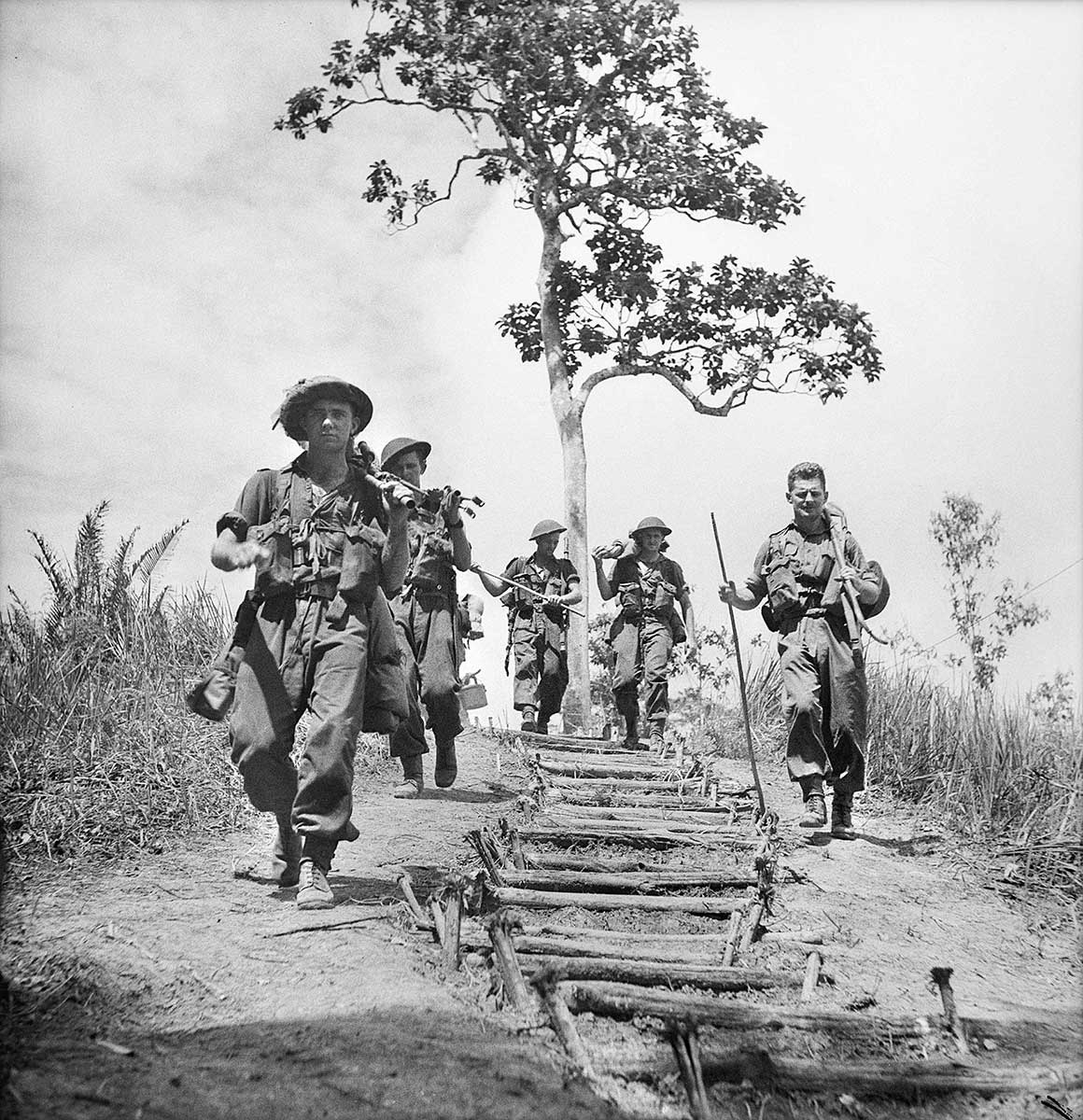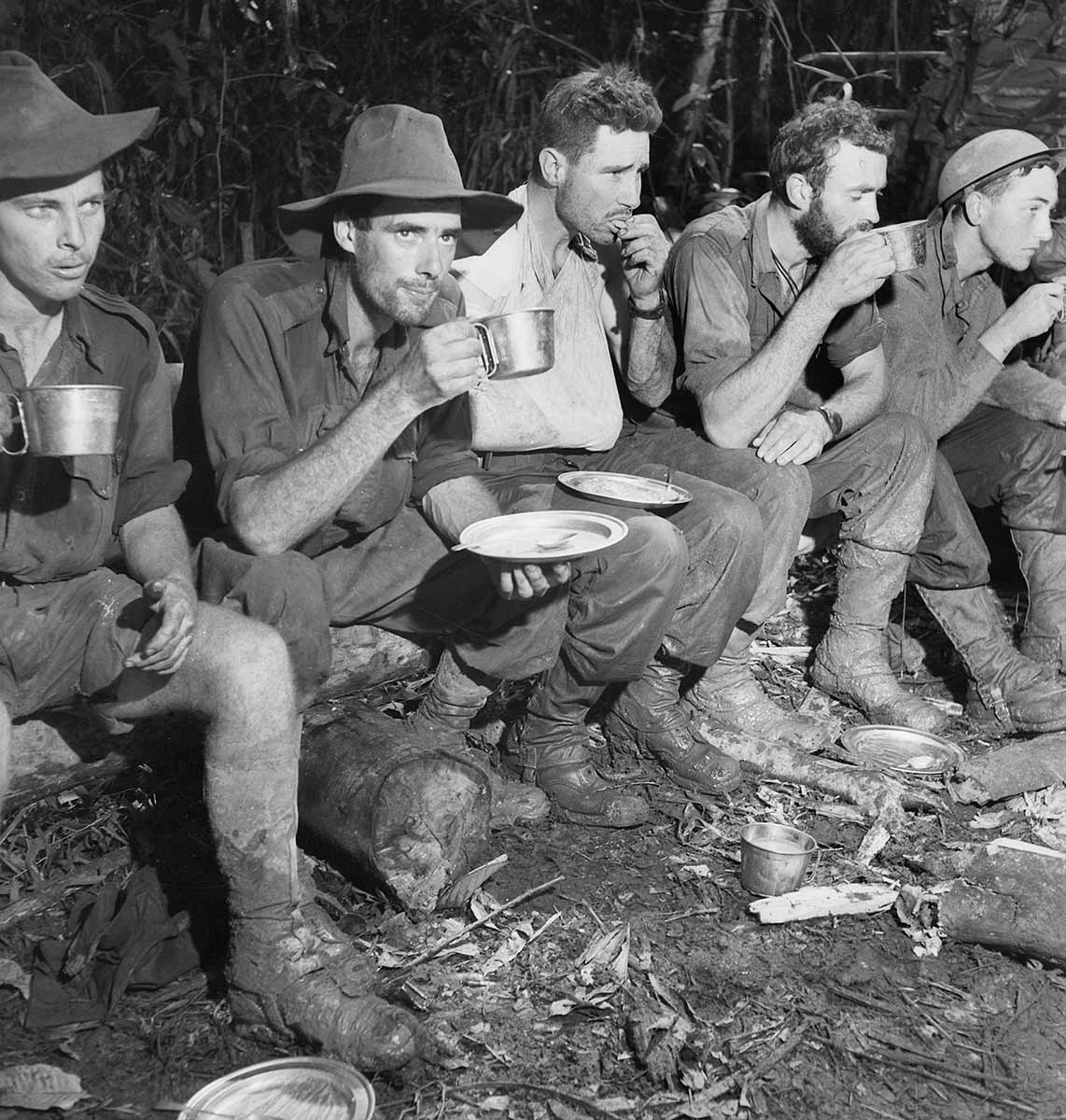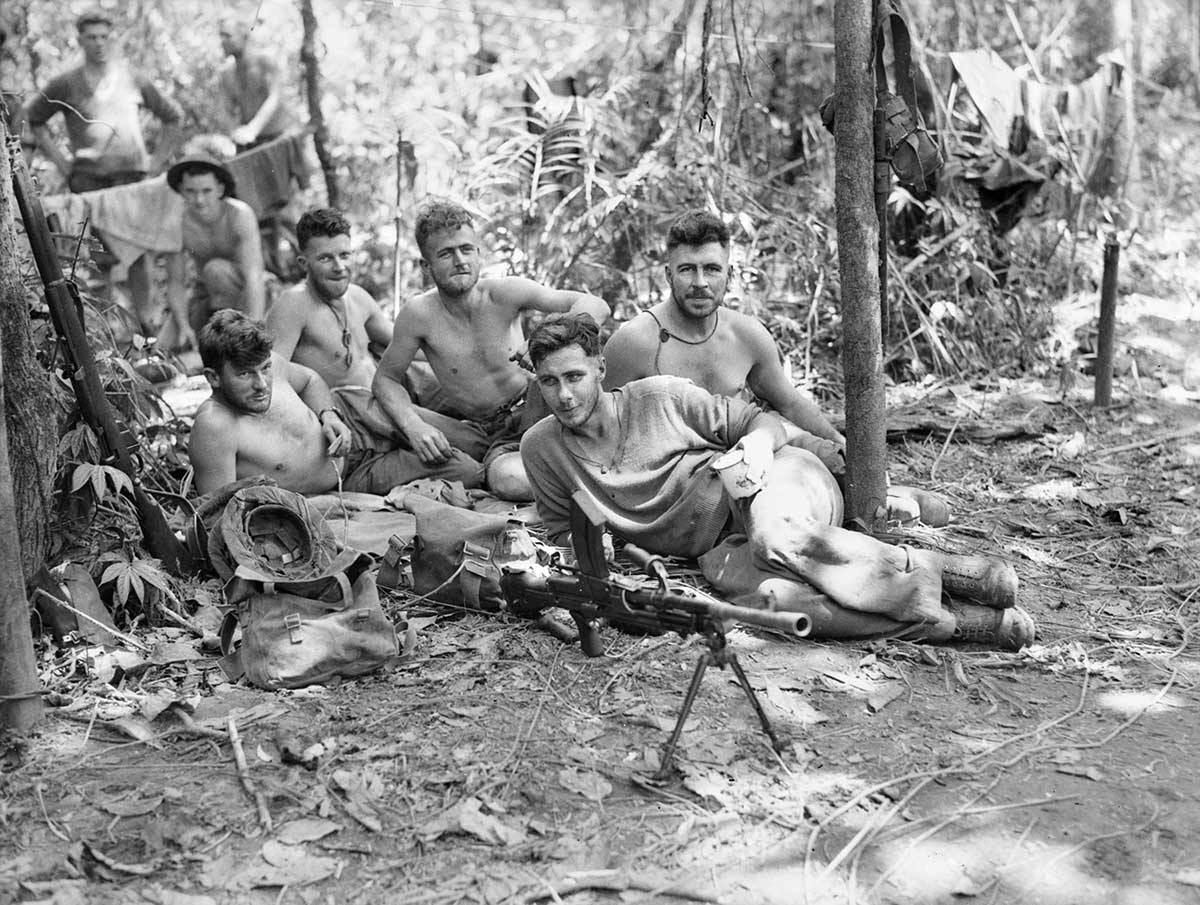Learning module:
Second World War Defining Moments, 1939–1945
Investigation 2: The Australian military experience of the war
2.1 Introduction

During the Second World War the Australian Army fought as an identifiable body, but often within a larger Allied structure, such as with British forces in the Mediterranean area, and American forces in the Pacific.
Many Royal Australian Air Force (RAAF) personnel were integrated into British bomber and fighter squadrons. They wore a distinctive uniform, and might be all-Australian crews, but they were often part of British units, especially in Europe, where they were part of fighter, bomber and coastal patrol units. However, many squadrons fought as separate Australian units in the Mediterranean, Pacific and Asia areas.
The Royal Australian Navy (RAN) operated as part of the wider British and Allied forces but also maintained its separate identity.
A small number of Australian nurses served in all three services from 1939. An Australian Army Medical Women’s Service (AAMWS) was formed in 1942 to expand the medical roles women could play in the Army.
During the war women’s auxiliary services were formed to allow women to take on roles previously performed by men, and free those men for combat roles. These were:
- the Australian Women’s Army Service (AWAS — 1942)
- the Women’s Royal Australian Naval Service (WRANS — 1942)
- the Women’s Auxiliary Australian Air Force (WAAAF — 1941).
Most of these women served in Australia. Some served in operational areas (such as New Guinea), though rarely near any fighting.
In 1942 an Australian Women’s Land Army was formed. It provided women to work on farms to replace men who had enlisted.
Choose an Investigation to explore aspects of the Australian experience of the Second World War.
|
Investigation 2.2 |
Investigation 2.3 |
Investigation 2.4 |
Investigation 2.5 |











